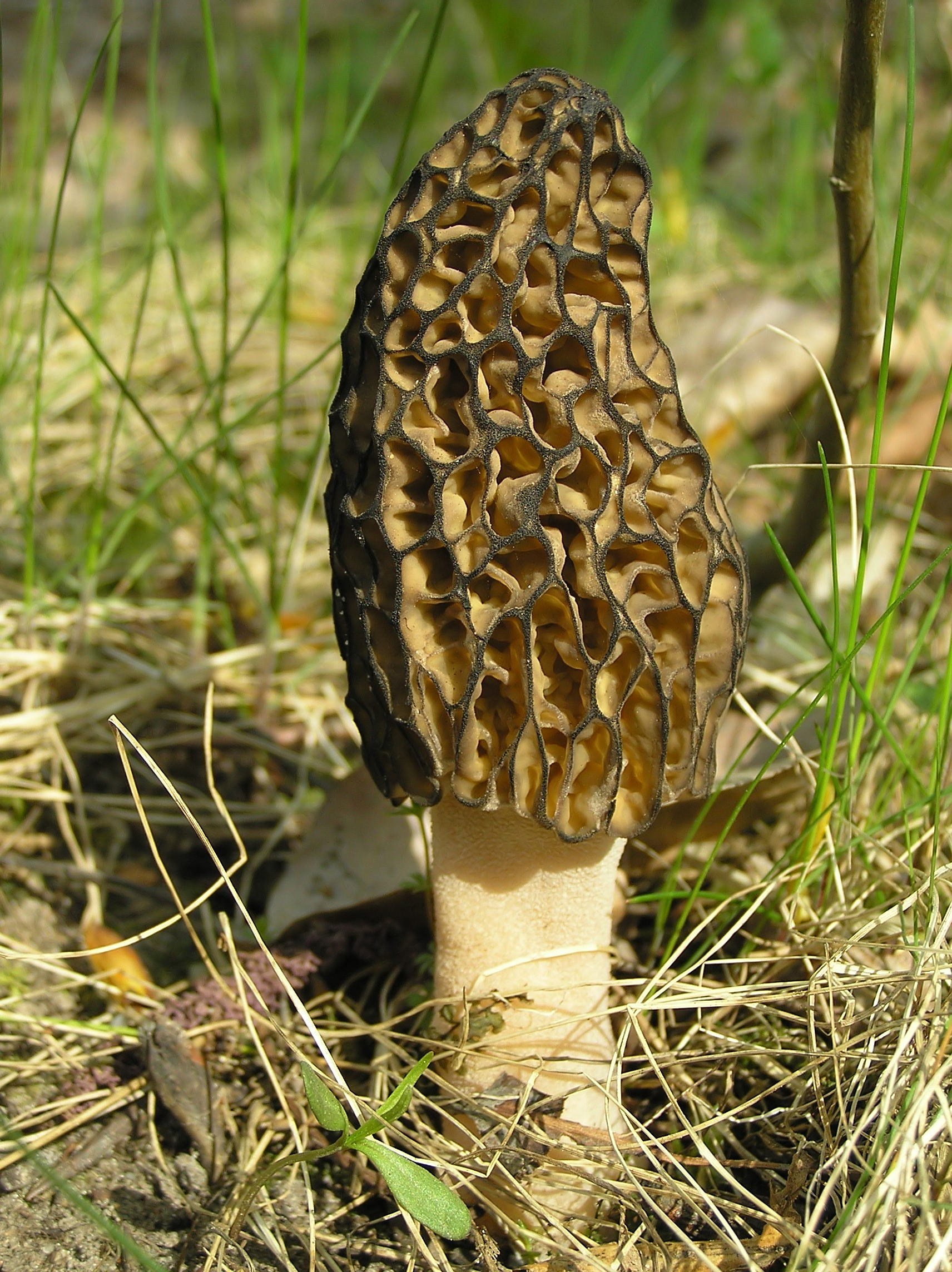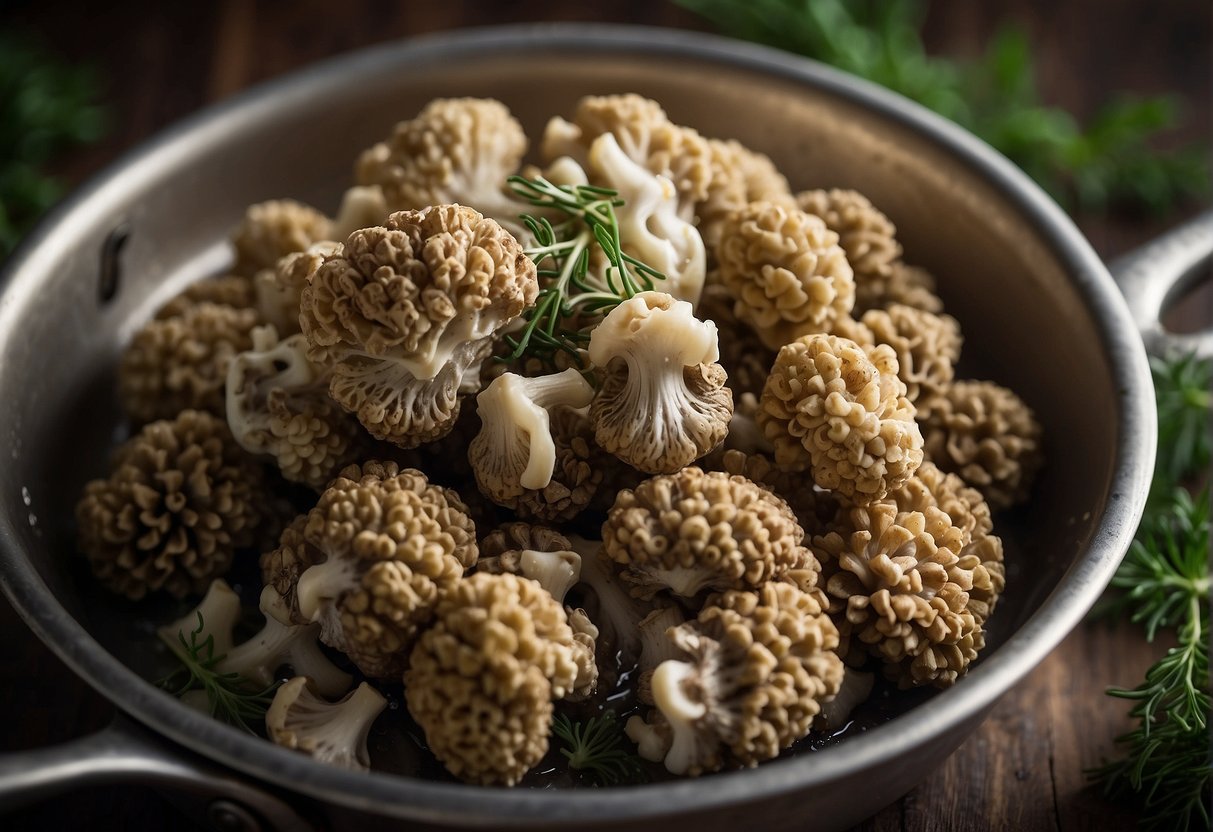The elusive white morel mushroom is a true treasure of the forest, sought after by experienced foragers and gourmet chefs alike. To get your hands on these culinary delights, you’ll need to have a keen eye and an understanding of their unique characteristics. Identifying white morels involves recognizing their distinctive cap shape, which is usually cone-like with deep, irregular pits and ridges. Unlike other varieties, the entire cap of a white morel is attached seamlessly to a stem that, just like the cap, is completely hollow.

When you’re out in the field hunting for these beauties, your timing and location are crucial. White morels have a penchant for woodland areas, particularly thriving under deciduous trees and in regions that have recently experienced a forest fire. They favor warm and wet conditions, appearing as winter wanes and spring begins to set in—usually between March and May. Remember, patience and respect for the natural habitat are your allies here; white morels are wild entities that defy commercial cultivation, making every successful foray a rewarding experience.
Identification of White Morels
When searching for white morels, it’s crucial to recognize key features such as cap appearance, stem structure, and habitat. Let’s look at the specifics to correctly identify these cherished fungi.
Cap Characteristics
White morels are known for their distinctive caps which can help you identify them with confidence. The cap of a white morel is cone-shaped and adorned with deep, irregular pits and ridges. Unlike the caps of other mushrooms, white morel caps are attached to the stem and are notably hollow. The color of the cap can range from a creamy white to a pale tan, sometimes with a slightly smoother surface compared to other morel varieties.
Stem Features
The stem of a white morel is typically white to pale cream and complements the cap. It’s important to slice the mushroom lengthwise to ensure that both the stem and cap are completely hollow – this is a key identifying feature of a true morel. The stem is stout and thick, providing a sturdy base for the cap.
False Morels Versus True Morels
Be mindful of false morels, like those from the Gyromitra genus, which can be toxic. False morels often have a cap that is more wrinkled and brain-like, with lobes and irregular bulges. In contrast, the true white morel will have that characteristic honeycomb-like appearance with a uniformly pitted and ridged surface. Always inspect the interior of a morel; true morels are completely hollow inside.
Habitat and Growing Conditions
White morels favor woodland habitats, often found in moist areas. They thrive in deciduous forests and are particularly fond of areas with ash, elm, and aspen trees. Look for them during the spring months when the soil temperature warms to about 45 to 50 degrees Fahrenheit. After fires or in disturbed grounds, morels may appear, benefiting from the nutrient-rich ash.
Foraging and Harvesting Tips
White morel mushrooms are treasures of the forest, sought after for their unique flavor and culinary value. Knowing the right time and place to look for them, employing effective foraging techniques, and practicing sustainable harvesting methods will greatly increase your success in bringing these delicacies from the woods to your table.
Best Times and Locations
Foraging for white morels is most fruitful during the spring months, typically from late April to June. These mushrooms favor warm soil temperatures and sufficient moisture, often thriving after a rain. You’ll find them nestled in wooded areas, especially near ash, elm, and oak trees. Pay attention to environmental clues; morels tend to grow in abundance near tree lines and on south-facing slopes, where the sun warms the earth earlier in the season.
- Spring Months: Late April to June
- Locations: Wooded areas near ash, elm, and oak trees
- Ideal Conditions: Warm, moist soil; after a rain
Foraging Techniques
When venturing into the woods, keep your eyes peeled for the distinctive cap shape and honeycomb texture of the white morel. Move slowly and scan the ground carefully; these mushrooms can be camouflaged by leaf litter. It’s beneficial to crouch low or sit to get a better view of your surroundings. White morels often grow in clusters, so if you find one, look around for more. Bring along a mushroom hunting book or guide to verify your finds and always be cautious—never consume mushrooms unless you’re absolutely certain of their identity.
- Identification: Cone-shaped cap with honeycomb texture
- Search Strategy: Scan the ground slowly, crouch for better visibility
- Safety: Use a mushroom guide for positive identification
Harvesting Practices
Proper harvesting techniques are critical to both preserve morel populations and ensure a bountiful harvest next season. Rather than pulling the entire mushroom out, use a sharp knife to cut the stem just above the soil, which helps protect the mycelium below. Carry your finds in a mesh bag to allow spores to disperse and promote future growth. Be respectful of the forest and adhere to any local foraging regulations, as this not only protects the ecosystem but also your freedom to forage.
- Cutting Tool: Sharp knife to protect the mycelium
- Carry Method: Mesh bag for spore dispersal
- Regulations: Adhere to local foraging laws and guidelines
As you venture out to gather these woodland gems, remember to respect the environment and enjoy the rich experience that foraging for white morels provides. With these strategies, you’ll maximize your chances of a successful and sustainable harvest. Happy foraging!
Culinary Uses and Preparation

White morels are a prize for any forager, boasting a unique taste that is earthy, nutty, and altogether delicious when prepared correctly. Your attention to detail in cleaning, cooking, and preserving these fungi will reward you with a culinary experience truly reflective of the wild.
Cleaning and Washing
Before you turn your fresh find into a delectable dish, cleaning your morels is crucial. Begin by rinsing them under cold water to remove any residual soil or debris. Then, slice them in half from stem to tip to check for insects and dirt hidden inside. It’s best to clean them shortly before cooking to prevent them from becoming waterlogged and losing their firm texture.
Cooking Methods
For a true taste of the wilderness, morels should be cooked with methods that enhance their natural flavors. Sautéing in butter or olive oil with a dash of salt is a simple way to enjoy their distinct taste. Whether you grill, bake, or fry, remember that morels need to be fully cooked, as consuming them raw can lead to stomach discomfort.
Preservation Techniques
If you’ve had a bountiful harvest and want to save some for later, there are effective preservation methods to maintain their quality. Drying morels is a popular technique: just spread them on a baking sheet and let them dehydrate at a low temperature until they’re completely dry. They can be rehydrated with water when you’re ready to cook, and they’ll retain much of their original taste and texture.
Conservation and Ecological Impact
White morel mushrooms are treasures of the forest, demanding responsible stewardship to ensure their longevity. Their unique role in nature calls for your awareness and action in preserving their habitats.
Sustainable Foraging
White morel mushrooms, coveted by chefs and foragers alike, thrive in an array of forest environments. When you forage, it’s crucial to adopt sustainable practices to avoid disrupting their delicate ecological balance. Here are a few guidelines:
- Harvest Mature Specimens: Allow young morels to mature and release spores for future growth.
- Cut, Don’t Pull: Use a knife to cut morels just above ground level to preserve the mycorrhizal network.
- Limit Your Harvest: Take only what you need, ensuring morels remain a fixture in their habitat for years to come.
By following these steps, you play a direct role in the conservation of white morels and their surroundings.
Role in the Ecosystem
White morels are not just a delightful find; they’re ecological powerhouses. They can function as both mycorrhizal partners, supporting tree growth by exchanging nutrients, and as saprotrophic organisms, recycling dead organic matter. This dual role reinforces the health of forest ecosystems.
- Soil Stabilizers: Their mycelia hold soil together, preventing erosion.
- Nutrient Cyclers: Decomposing organic matter, morels help maintain soil fertility.
By understanding the ecological impact of white morels, you can appreciate the inherent value they bring to their natural habitat beyond their culinary appeal. Your sustainable harvesting practices directly influence the thriving populations of these wild mushrooms and the greater forest ecosystem.


